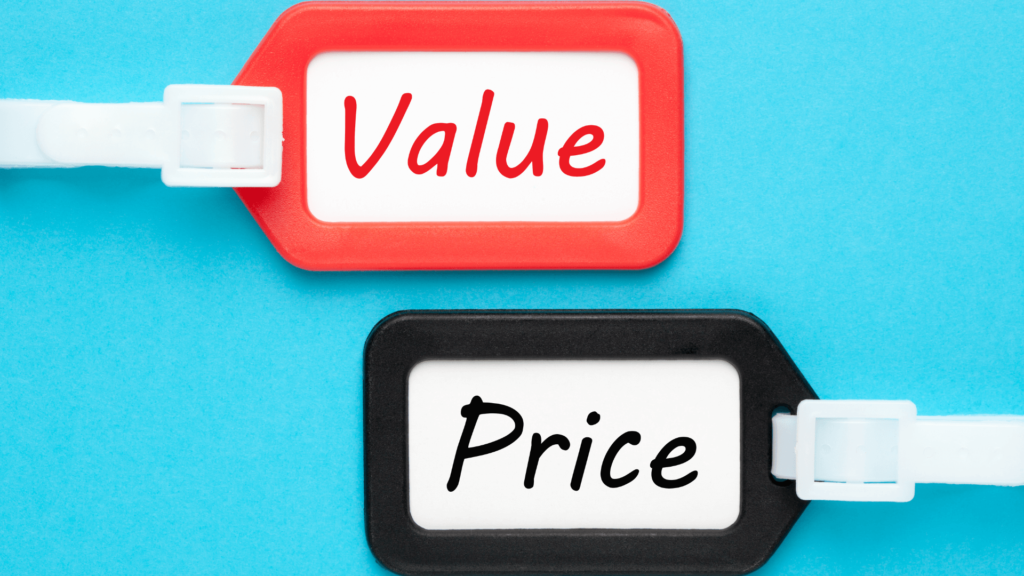Mastering the Art of Pricing Strategy: Your Guide to Achieving Business Success

- Understanding the Fundamentals of Pricing
- Developing a Pricing Strategy
- Value-Based Pricing
- Dynamic Pricing
- Psychological Pricing
- Bundling and Price Discrimination
- Analyzing Pricing Strategies
- Customer Acquisition and Pricing
- Unlocking Opportunities with Pricing
- Examples of Effective Pricing Strategies
- Types of Pricing Models
In this comprehensive article, we will delve into the world of pricing strategy and explore how it can be a game-changer for businesses looking to achieve growth, profitability, and customer satisfaction.
We will uncover the fundamentals of pricing, discuss various pricing models, and examine real-life examples of effective pricing strategies.
Whether you are a small business owner or a seasoned entrepreneur, this guide will equip you with the knowledge and insights needed to master the art of pricing strategy and unlock new opportunities for success.
Let's dive in and discover the power of pricing strategy in driving business growth.
Understanding the Fundamentals of Pricing
Grasping the core principles and concepts that underpin effective pricing is essential for any business looking to achieve success. Knowing the fundamentals of pricing enables informed decisions on how to set your products or services to maximize profitability and customer satisfaction.
This includes factors such as costs, market dynamics, value perceptions, and competition, allowing you to develop a pricing policy that positions your business for growth and sustainability.
A key element of understanding the fundamentals of pricing is recognizing the importance of value-based pricing. This requires setting prices based on the estimated value that customers get from your goods or services.
By aligning your rates with the value customers place on your offerings, you can capture a fair share of that value for your business. This necessitates a profound appreciation of customer behavior and the unique value proposition your pricing brings to the market.
By implementing a value-based pricing strategy, you can make sure that your pricing accurately reflects the worth of your offerings and attracts the right customers.
Dynamic pricing is another fundamental concept in pricing. This approach involves adjusting prices in real-time depending on various factors such as demand, supply, and market conditions. Dynamic pricing allows businesses to optimize their pricing to maximize revenue and profitability.
By leveraging data and analytics, businesses can identify patterns and trends that influence pricing and make timely adjustments to capture opportunities.
Through dynamic pricing, your business can remain agile and responsive to market dynamics, enabling it to stay competitive and capitalize on changing customer preferences.
Developing a Pricing Strategy
Creating a pricing plan is an essential element in attaining business accomplishments. It entails thoroughly examining industry trends, comprehending consumer behavior, and ascertaining the benefit of your products or services.
By constructing a pricing plan, you can set your business up for expansion and profitability while making sure customers are content. This activity necessitates consistent assessment and alteration to remain competitive in the market.
With the correct pricing plan in place, you can unlock new prospects and form long-lasting consumer relationships that boost revenue growth.
When devising a pricing plan, it is vital to consider various factors such as outlay, rivals, and value perceptions. By perceiving the market dynamics and the competitive landscape, you can identify the optimal pricing model for your business.
Whether it's value-based pricing, dynamic pricing, psychological pricing, or bundling, each process has its own benefits and considerations.
By evaluating pricing plans and their effectiveness, you can make informed decisions that are consistent with your business goals.
Bear in mind, that designing a pricing plan is an ongoing endeavor that necessitates careful preparation and implementation to attain sustainable success in the ever-changing market.
Value-Based Pricing
Value-based pricing is a tactical move that concentrates on the perceived value of a product or service to the customer. Rather than setting prices based on costs or competition, firms utilizing this pricing model contemplate the special advantages and value that their offerings provide to customers.
By understanding the precise needs and preferences of their target market, businesses can set prices that reflect the worth customers are ready to pay.
This method permits firms to capture a higher amount for their products or services, resulting in increased profitability and customer satisfaction. Executing value-based pricing necessitates a thorough comprehension of customer behavior and market dynamics, as well as ongoing monitoring and adjustment to guarantee that prices align with perceived value.
Value-based pricing offers a number of benefits for businesses.
Firstly, it enables companies to set themselves apart from competitors by emphasizing the distinctive value they provide. By focusing on the benefits and results that their product or service delivers, businesses can support higher prices and position themselves as providing superior value.
Secondly, value-based pricing allows companies to capture a larger portion of the market by drawing in customers who are willing to pay a surcharge for quality and value. This permits businesses to enhance their revenue and profitability.
What is more, value-based pricing encourages customer loyalty and repeat business, as customers are more likely to stay devoted to a brand that persistently meets its value proposition.
By executing effective value-based pricing approaches, businesses can attain sustainable success in the marketplace and gain a competitive edge for their products.
Dynamic Pricing
A shrewd approach for businesses, dynamic pricing allows them to adjust prices in real time based on a variety of elements such as demand, competition, and market situations. By embracing this modifiable pricing plan, companies can maximize their revenue and become more profitable.
For example, an e-commerce store may use dynamic pricing to raise their prices during peak demand times or decrease them to lure in customers during slower periods.
This adaptive pricing technique can help organizations stay competitive and take advantage of market openings.
One of the main advantages of dynamic pricing is its ability to react rapidly to changes in the market. By utilizing real-time data and algorithms, businesses can establish prices that reflect current market conditions and customer preferences.
This approach permits companies to capture additional value from their products or services and adapt to shifts in demand. Additionally, dynamic pricing can assist businesses in optimizing their inventory management and reducing the risk of overstocking or understocking.
By adjusting prices based on demand, businesses can more accurately align supply and demand, thereby lowering costs related to managing your product.
Implementing dynamic pricing necessitates a mix of data analysis, pricing algorithms, and effective pricing plans. It is essential for businesses to carefully study market dynamics, customer behavior, and competitor pricing to make informed pricing decisions.
By taking advantage of advanced analytics and pricing software, businesses can automate the dynamic pricing process and efficiently manage pricing strategies. Nonetheless, it is important to maintain a balance between earning more revenue and keeping customers satisfied.
Dynamic pricing should be instituted in a way that gives customers value while also ensuring profitability for the business.
Psychological Pricing
Businesses can take advantage of the power of psychology to influence customer perception and behavior through clever pricing tactics.
Charm pricing (e.g., setting a price at $9.99 instead of $10) and decoy pricing (e.g., offering a higher-priced option to make the other options seem more affordable) are just a few examples of how companies can use cognitive biases to create a sense of value and increase the likelihood of purchase.
The left-digit effect is one of the key principles behind this marketing approach, as it suggests that customers tend to be more focused on the leftmost digit of a price and perceive a significant difference between prices that differ by just one cent.
Other psychological strategies such as anchoring, contrast effects, scarcity, and urgency can be used to create a sense of FOMO and drive sales of goods or services.
Although psychological pricing can be a powerful tool for businesses, it is important to understand the target market, competition, and the specific context in which the products are being sold. This strategy should be implemented thoughtfully and ethically, without deceiving or misleading customers.
With the right knowledge and experience, companies can master the art of psychological pricing and take their pricing strategy to the next level.
By using the right psychological pricing techniques, businesses can maximize their sales of items or services and increase their profits. It is essential to understand the psychological factors that influence consumer decision-making in order to effectively leverage this approach and achieve the desired results.
With a thoughtful and ethical strategy, businesses can tap into the power of psychology and boost their success.
Bundling and Price Discrimination
Bundling and price discrimination are two powerful tactics that companies can use to maximize their profits and gain an edge in the market.
Combining multiple items or services into a package deal and offering them at a discounted rate not only raises the perceived value for customers but also encourages them to buy more, leading to higher sales volume.
Moreover, it allows businesses to market and sell products that may have low demand when sold individually. On the other side, price discrimination consists of charging different rates to different consumer segments based on their willingness to pay.
By customizing prices to certain customer groups, firms can capture extra income from those who are willing to pay a premium for their goods or services. To take advantage of bundling and price differentiation strategies, organizations need to conduct market analysis and segmentation to find the right product mixes and target customer segments.
Price discrimination can appear in different forms, such as first-degree, second-degree, or third-degree price discrimination.
First-degree price discrimination, otherwise known as personalized pricing, implies setting different prices for each customer according to their individual willingness to pay.
This necessitates gathering and analyzing customer data to identify the optimal pricing for every person.
Second-degree price discrimination incorporates offering different pricing tiers or choices based on quantity or utilization.
This can be seen in subscription-based services that provide various pricing plans with various features or utilization limits.
Lastly, third-degree price discrimination involves charging varied prices depending on demographic or market segment characteristics.
For instance, companies may provide discounts to students or senior citizens. By implementing price discrimination approaches, businesses can generate additional revenue by extracting the highest value from distinct consumer groups.
Analyzing Pricing Strategies
Developing and instituting efficient pricing models necessitates an analysis of diverse approaches and techniques. By examining the market atmosphere, consumer behavior, and value proposition, companies can garner insights into the most practical pricing models for their services or products.
Through prudent analysis, companies can identify strategies that promote profitability, advance customer satisfaction, and establish long-term prosperity in the industry.
A fundamental component of pricing analysis is taking into consideration the competitive terrain.
By studying the pricing of competitors, businesses can gain useful insights into industry patterns and customer expectations.
This review allows companies to identify chances for setting themselves apart and obtaining a competitive edge through pricing.
By recognizing the pricing strategies of the competition, businesses can make advised decisions about their own pricing models, guaranteeing they remain competitive and maximize the worth of their offerings.
A further imperative part of pricing analysis is assessing the influence of cost on customer acquisition and retention.
By studying consumer behavior and preferences, businesses can determine the most suitable pricing models to attract and preserve customers.
This review may involve categorizing customers based on their willingness to pay, preferences, and buying habits.
By customizing pricing strategies to various consumer segments, businesses can maximize revenue and customer delight.
Analyzing the effects of pricing on customer acquisition and retention helps businesses make data-driven decisions that stimulate growth and cultivate long-term customer relationships.
Customer Acquisition and Pricing
When it comes to business growth, acquiring customers is a paramount consideration – and the price tag holds considerable sway in this regard. A suitable pricing plan can have a major impact on customer acquisition, helping to shape their perception of value and motivating them to select your product or service over rivals.
Finding the balance between offering competitive costs that appeal to customers and maintaining profit margins is essential.
By understanding how customer acquisition and price are connected, businesses can devise effective strategies that meet their growth targets and form lasting customer relationships.
The cost plays a major role in acquiring and retaining customers, and a smart pricing strategy can contribute greatly to this. It is necessary to find an equilibrium between providing reasonable prices to draw customers in, while still staying profitable.
By comprehending the interrelation between customer acquisition and price, companies can form strategies that are in line with their growth aims and foster long-term customer relationships.
Business expansion is heavily reliant on customer acquisition, and the cost has a crucial part to play in this. Creating a suitable pricing plan can have a major effect on customer acquisition, impacting their notion of value and encouraging them to favor your product or service over competitors.
It is imperative to strike a balance between providing competitive prices that appeal to customers while still sustaining profitability. By understanding the relationship between customer acquisition and cost, businesses can create effective strategies that adhere to their growth objectives and cultivate lasting customer relationships.
Customer acquisition is essential to business growth, and the price is a key factor in this. Crafting the right pricing strategy can make an enormous impact on customer acquisition by influencing their understanding of value and motivating them to choose your product or service over competitors.
It is critical to find the right balance between offering competitive prices that draw customers in while still remaining profitable.
By recognizing the relationship between customer acquisition and cost, businesses can develop effective strategies that align with their growth objectives and establish lasting customer relationships.
Unlocking Opportunities with Pricing
Uncovering Opportunities with Prices is a critical component of achieving business success. By understanding the basics of pricing and forming effective pricing policies, companies can generate prospects for expansion and profitability.
By strategic pricing, businesses can differentiate themselves from competitors, draw in new customers, and optimize income potential.
A major element of unlocking opportunities with prices is value-based pricing. By comprehending the value that customers view in a product or service, companies can price their offerings accordingly. Value-based pricing allows businesses to capture the utmost value from customers and place themselves as providers of high-quality products or services.
This approach can result in greater customer loyalty, higher profit margins, and a competitive edge in the market.
Dynamic pricing is another pricing policy that can unlock opportunities. With dynamic pricing, businesses can alter prices in real-time based on factors such as demand, competition, and customer behavior.
This strategy enables businesses to optimize revenue by charging different prices to different customer segments or at different times. By utilizing technology and data analytics, companies can implement dynamic pricing strategies that maximize revenue potential and adjust to shifting market conditions.
Furthermore, bundling and price discrimination are pricing strategies that can unlock opportunities for businesses. Bundling involves offering multiple products or services together at a discounted price, which can incentivize customers to purchase more and raise overall revenue.
Price discrimination, on the other hand, involves charging different prices to different customer segments based on their willingness to pay.
By customizing prices to specific customer groups, businesses can maximize revenue and cater to different customer needs and preferences. These tactics can unlock new market segments and provide opportunities for business growth.
Examples of Effective Pricing Strategies
For businesses to remain competitive and secure sustainable growth, analyzing and effectively implementing pricing strategies is essential. Value-based pricing is one such approach, where prices are set based on the perceived value of the product or service to the customer; this allows companies to capture the maximum value from their offerings and stand out from rivals.
Dynamic pricing is another effective strategy, where prices are adjusted in real-time depending on factors such as consumer demand, competition, and behavior.
Additionally, psychological pricing utilizes techniques to appeal to the emotions and perceptions of potential buyers, influencing their decision-making.
Along with these techniques, bundling and price discrimination may also be viable options. Bundling involves offering multiple items or services at a reduced cost, thus providing customers with added value and prompting them to make a purchase.
Price discrimination involves charging different prices for the same product or service based on factors like location, customer segment, or time of purchase, allowing companies to obtain additional revenue by targeting different customer segments.
Assessing and assessing pricing strategies is critical to identify their effectiveness and make informed decisions. By observing and assessing the performance of various pricing strategies, organizations can determine which works best for their specific business and make the necessary adaptations.
Ultimately, examples of effective pricing strategies provide invaluable insight and motivation for businesses that want to improve their pricing practices and achieve lasting success.
Types of Pricing Models
Realizing the ideal success of a business requires choosing the right Types of Pricing Models. The Hourly Rate model is one approach where customers are charged based on the amount of time expended on a project or service.
Companies can calculate their intended yearly earnings and factor their overhead into establishing an equitable hourly rate. Alternatively, Value-Based Pricing focuses on the perceived value of a product or service to the customer, rather than just the production cost. This methodology evaluates the advantages and results that the customer will benefit from.
To increase revenue, Dynamic Pricing can be employed and prices can be modified in real-time to conform to market demand.
Lastly, Bundling and Price Discrimination involves offering multiple products or services as a package deal, typically at a discounted rate. This tactic encourages customers to purchase more items and can help to expand total sales.
Understanding the different types of pricing models can empower businesses to construct effective strategies that align with their objectives and foster success.
Constructing the correct Types of Pricing Models is fundamental for businesses seeking to achieve success. By utilizing a pricing system that is in sync with their goals, businesses can position themselves for growth, profit, and customer satisfaction.
One popular model is Value-Based Pricing, which concentrates on the perceived value of a product or service. By understanding the benefits and outcomes that customers desire, businesses can set prices that reflect this value and draw in the right audience.
Dynamic Pricing is another effective model which allows businesses to modify prices in real time according to market demand. This adaptability provides businesses with the capacity to optimize their pricing strategy and maximize revenue.
Psychological Pricing is a strategy that utilizes the psychology of consumers to influence their perception of price. By pricing just below a whole number or using the power of 9 at the end, businesses can create the illusion of a lower price and persuade customers to make a purchase.
Lastly, Bundling and Price Discrimination is a model that involves offering multiple products or services as a package deal.
This technique not only encourages customers to purchase more items but also allows businesses to cater to different customer segments with different pricing options.
By considering these different types of pricing models, businesses can design a strategy that meets their ambitions and drives success.
Leave a Reply




Related Posts